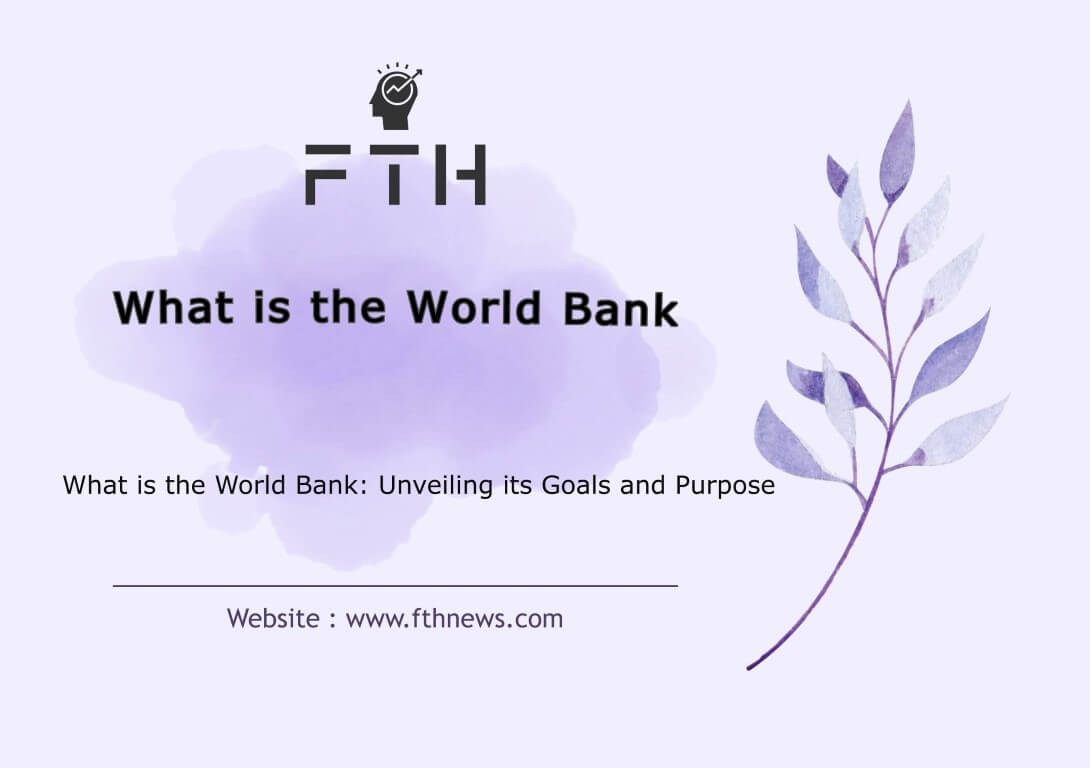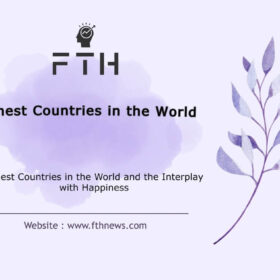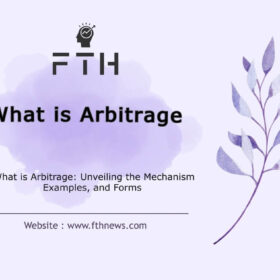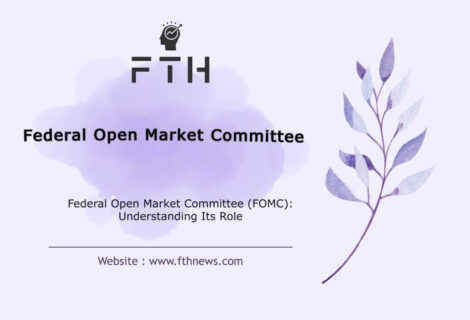
What is the World Bank: Unveiling its Goals and Purpose
What is the World Bank ? In the relentless pursuit of global economic equity, the World Bank emerges as an unparalleled force, holding the esteemed title of the largest development bank worldwide. Its sweeping influence extends across 189 member countries, positioning itself at the forefront of combating poverty and championing shared prosperity.
Operating seamlessly through a network of 130 offices globally, the World Bank is a formidable entity comprised of five institutions, synergistically working towards the realization of its profound mission. These institutions, each wielding unique capabilities, collectively contribute to the World Bank’s commitment to fostering sustainable development and uplifting nations around the world.
Founding and Evolution of the World Bank
Established in 1945 as the International Bank for Reconstruction and Development (IBRD), the World Bank embarked on a transformative journey aimed at financing the reconstruction of post-World War II countries. The institution’s evolution from its inception as a reconstruction-focused entity into a key player in global economic development is a testament to its adaptability and far-reaching impact.
At its core, the World Bank was conceived to address the immediate infrastructure needs of war-ravaged nations. Over time, it grew beyond its initial mandate, aligning itself with the broader goals of international financial stability, often working in tandem with the International Monetary Fund (IMF).
As the world witnessed geopolitical shifts and emerging challenges, the World Bank strategically redirected its focus towards third-world countries. This shift represented a significant expansion of its mission, transcending the reconstruction-centric origins to tackle a spectrum of issues inhibiting economic growth in developing nations.
The World Bank’s evolution reflects its dynamic response to the changing needs of a globalized world. From a post-war reconstruction entity to a multifaceted force in global economic development, its journey underscores a commitment to addressing the diverse challenges faced by nations on their path to prosperity.
World Bank Leadership:
At the helm of the World Bank Group, Jim Yong Kim, a US citizen with South Korean origins, has left an indelible mark through visionary leadership. Serving as the 12th President since 2012, Dr. Kim’s tenure has been characterized by a blend of expertise, innovation, and a commitment to global progress.
Beyond the conventional boundaries of financial leadership, Dr. Kim, with a background in medicine and anthropology, has brought a unique perspective to the role. His previous presidency at Dartmouth College in the USA showcased a diverse skill set that has proven instrumental in navigating the complex landscape of international development.
A pivotal moment in Dr. Kim’s leadership was the approval of a significant capital increase of $13 billion in 2018. This financial injection underscored the World Bank’s dedication to amplifying its impact, providing crucial resources for a spectrum of initiatives, including financing, investment, and guarantees.
In the same year, the World Bank Group, under Dr. Kim’s guidance, committed approximately $67 billion, showcasing a forward-thinking approach to global challenges. This financial commitment reflects not only a focus on economic development but also an acknowledgment of the multifaceted issues the world faces.
President Kim’s impact extends beyond financial milestones. He has actively championed causes of global significance, from advancing clean energy projects in Southeast Asia to playing a crucial role in the fight against the Ebola virus in Africa. This dual commitment to financial prowess and humanitarian causes underscores the World Bank’s role as a dynamic force for positive change.
As we reflect on the leadership of Jim Yong Kim, it becomes evident that his visionary approach has redefined the World Bank’s role in the international arena. The institution, under his guidance, continues to navigate challenges with resilience, embodying a commitment to sustainable development and a more equitable global future.
World Bank Goals and Purpose:
At the heart of the World Bank’s mission lies a resolute commitment to alleviating poverty and enhancing living standards in low- and middle-income countries. Its overarching goal is not merely financial; it is a dedication to fostering development, sustainable economic growth, and a balanced international trade landscape.
The World Bank achieves its mission through a multifaceted approach. One key mechanism involves providing low-interest or interest-free loans and grants to nations, acting as a financial lifeline for projects that catalyze progress. These initiatives span diverse sectors, from infrastructure to social services, reflecting a comprehensive strategy to uplift communities.
However, the World Bank’s ambitions extend beyond financial assistance. It actively supports the development and sustainable economic growth of member countries, contributing to the creation of robust, self-sufficient economies. By attracting and facilitating private foreign investments, the institution becomes a catalyst for innovation and progress.
Looking towards the horizon, the World Bank has set two pivotal goals for 2030. The first is a bold ambition to eradicate extreme poverty on a global scale. This involves a concerted effort to reduce the percentage of people living on less than $1.90 a day to below 3% of the world population.
The second goal is equally ambitious – to promote shared prosperity in every country. This entails a commitment to increasing income growth in the bottom 40% of populations across the globe, ensuring that the benefits of economic development are inclusively distributed.
we navigate the complex landscape of international development, it becomes evident that the World Bank is not just an institution of financial support; it is a driving force behind a vision for a more equitable and prosperous world. Through its multifaceted goals and purpose, the World Bank strives to be a beacon of positive change, fostering sustainable development and shared prosperity on a global scale
Organizations Included in the World Bank Group
The World Bank Group stands as a formidable coalition of five institutions, each playing a distinctive role in advancing international development and economic stability:
International Bank for Reconstruction and Development (IBRD)
At the forefront of global development finance, IBRD emerges as the world’s largest development bank. Its mission encompasses providing loans, guarantees, and advisory services, primarily directed toward middle-income and creditworthy low-income countries. IBRD’s expansive reach and financial expertise position it as a cornerstone for sustainable economic growth.
International Development Association (IDA)
With an unwavering focus on poverty reduction, IDA takes center stage in offering a helping hand to the world’s poorest countries. Beyond financial aid, IDA extends loans and grants to vital sectors such as infrastructure, agriculture, and public administration. Its commitment to uplifting the most vulnerable nations underscores the World Bank Group’s dedication to inclusivity.
Multilateral Investment Guarantee Agency (MIGA)
In the intricate landscape of cross-border investments in developing countries, MIGA serves as a vital ally to investors. By providing political risk insurance and repayment guarantees, MIGA bolsters confidence in investment endeavors. This risk mitigation mechanism ensures that investors can navigate uncertainties, fostering a conducive environment for sustainable development.
International Finance Corporation (IFC)
As the largest global development organization focusing on the private sector, IFC tackles challenges that often elude traditional financial models. From financing to market creation, IFC actively engages with the private sector in developing countries. Its strategic initiatives drive innovation and entrepreneurship, contributing to the diversification and resilience of economies.
International Center for Settlement of Investment Disputes (ICSID)
In the intricate realm of international investments, conflicts can arise. ICSID steps in as a mediator, playing a crucial role in resolving disputes between investors and local governments. By providing a fair and transparent platform for dispute resolution, ICSID ensures the continuity of projects and fosters an environment conducive to sustained investment.
As we explore the diverse roles of these World Bank Group institutions, it becomes evident that their collective impact transcends financial support. They are architects of stability, advocates for inclusivity, and facilitators of innovation, working collaboratively to advance the global development agenda.
Where is the World Bank Headquarters?
Nestled in the heart of the United States, the World Bank proudly establishes its headquarters in Washington DC, the vibrant capital that serves as a symbolic center for international cooperation and diplomacy. This strategic location underscores the institution’s commitment to fostering collaboration and dialogue on a global scale.
World Bank Data and Loans:
International Statistics and Indicators
The World Bank transcends its physical headquarters, extending its influence through the World Bank Open Data page. This digital portal serves as a treasure trove of international statistics and indicators, providing policymakers, researchers, and the public with invaluable insights into global trends and development dynamics. From World Development Indicators to International Debt Statistics, the data sets offered empower users with a comprehensive understanding of the multifaceted facets of our interconnected world.
Financial Support for Global Progress
Beyond data dissemination, the World Bank is a beacon of financial support for transformative projects worldwide. Through its diverse array of loans, including low-interest or interest-free options, and grant loans, the institution catalyzes initiatives that range from infrastructure development to social welfare programs. This financial flexibility ensures that projects align with sustainable and inclusive development goals.
As the World Bank’s headquarters in Washington DC symbolize the epicenter of its operations, the digital realm of World Bank Open Data and the impactful financial instruments underscore its commitment to fostering informed decision-making and global progress. The institution’s influence reverberates far beyond geographical boundaries, embracing a digital era where data and financial support converge to shape a more equitable and prosperous world.
World Bank Goals for 2030
The World Bank has set its sights on an ambitious agenda, encapsulated in 17 comprehensive goals to be achieved by the year 2030. At the forefront of this mission is the unwavering commitment to eradicate extreme poverty and foster shared prosperity on a global scale. These goals serve as a roadmap, guiding the institution’s multifaceted efforts towards addressing complex challenges and catalyzing positive change across nations.
The Human Capital Project:
Central to the World Bank’s strategy is the Human Capital Project, a visionary initiative that recognizes the paramount importance of investing in and developing human capital for societal and economic progress. By placing emphasis on education, healthcare, and overall well-being, the project seeks to unleash the full potential of individuals, ultimately contributing to the collective advancement of societies.
As the World Bank aligns its endeavors with the Human Capital Project, it becomes a catalyst for change, recognizing that human capital is not just a resource but the driving force behind sustainable development.
Conclusion:
In our exploration of the World Bank’s rich history, intricate structure, and ambitious objectives, one truth emerges – this international organization stands as a pivotal force in shaping the global landscape. Beyond the numbers and financial mechanisms, the World Bank’s multifaceted approach speaks to a profound commitment to creating a world that is not only economically prosperous but also inherently equitable.
As we navigate the complex terrain of international development, the World Bank’s vision for 2030 serves as a beacon, guiding us towards a future where extreme poverty is eradicated, shared prosperity is realized, and the potential of every individual is unlocked. The World Bank, through its unwavering dedication, strives to be more than an institution – it aspires to be a transformative catalyst for a more prosperous and equitable world for all.
FAQ
The World Bank provides financial and technical assistance to developing countries for projects that promote economic development, reduce poverty, and improve living standards.
The World Bank is controlled by its member countries, with decisions made collectively by their representatives on the Board of Governors and the Board of Executive Directors.
The World Bank functions include providing loans and grants for development projects, offering financial and technical expertise, and conducting research to address global economic challenges.
The World Bank consists of 189 member countries.














